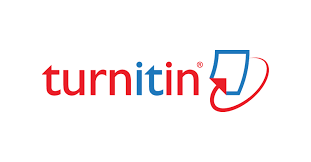An Analysis of Speech Act Used in Enola Holmes Movie
DOI:
https://doi.org/10.32493/ljlal.v6i2.41674Keywords:
Enola Holmes the Movie, pragmatics, speech actsAbstract
Miscommunication about the meaning of words in relation to the context of a situation is a common problem faced by both speakers and hearers. It was interesting in finding out about how language functions in human interaction, taking into account the context that affects communication as well as the intents behind utterances. Then, this research aims to identify the types of speech acts used; the most dominant types; the intended meanings of speech acts employed by Enola Holmes in the movie "Enola Holmes." This study adopts a descriptive qualitative approach, focusing on the utterances of the character Enola Holmes. Utilizing George Yule's theoretical framework for speech act analysis, the findings reveal four categories of speech acts: representatives, expressives, directives, and commissives. The predominant category identified is representative speech acts, accounting for 127 out of 222 instances (57%). The speech acts in the movie serve various purposes, including stating the truth, providing information, narrating life stories, refusing unwanted propositions, expressing adventure and unselfish assistance, showing friendship, making requests, indicating kinship conversing, and expressing amusement or pleasure. This study sheds light on the numerous functions and meanings that language serves for fictional characters in a movie, like Enola Holmes.
References
Creswell, J. W. (2014). Research Design: Qualitative, Quantitative, and Mixed Methods Approaches. In research design (4rd ed., Vol. 4, Issue 1). Sage Publications.
Cutting, J. (2002). Pragmatics and Discourse. In From Language To Communication. https://doi.org/10.4324/9781410603685-11
Gass, S. M., & Varonis, E. M. (1991). Miscommunication in nonnative speaker discourse. In N. Coupland, H. Giles, & J. M. Wiemann (Eds.), Miscommunication and problematic talk (pp. 121-145). Newbury Park, CA: Sage.
Huang, Y. (2014). Pragmatics. In Language (2nd ed.). Oxford University Press. https://doi.org/10.21832/9781783095001-007
Kreidler, C. W. (2002). Introducing English semantics, second edition. In Introducing English Semantics, (2nd ed.). Routledge. https://doi.org/10.4324/9781315886428
L.Mey, J. (2001). Pragmatics: An Introduction (2nd ed.). Wiley-Blackwell.
Leech, G. N. (1983). Principles of Pragmatics. In Computation of Language (1st ed.). Routledge. https://doi.org/10.1007/978-3-642-74564-5_12
Levinson, S. C. (1983). Pragmatics. In Language (1st ed., Vol. 4, Issue 1). Cambridge University Press.
Maximilian, A. (2020). TRANSLATION ABILITY, READING HABIT, AND READING SKILL IN VOCATIONAL SCHOOL STUDENTS IN INDONESIA: A CORRELATION. JETA: Journal of English Teaching and Applied Linguistic, 1(1), 30–44. http://jurnal.stkippgribl.ac.id/index.php/jeta
Rundell, M. (2005). Macmillan English Dictionary: For Advanced Learners of American English (PAP/CDR). Palgrave Macmillan.
Searle, J. R. (1999). Mind, Language, and Society (1st Editio). Basic Books.
Sutiyono, A., Maximilian, A., & Ajeng, G. D. (2023). EFL Teachers’ Perceptions Regarding Cultural Awareness in ICT-Based Learning in Indonesian Elementary School Context. IJLHE: International Journal of Language, Humanities, and Education, 6(1), 41–54.
Yule, G. (1996). Pragmatics (1st ed.). Oxford University Press.
Downloads
Published
How to Cite
Issue
Section
License
Copyright (c) 2024 Mega Putri Agatha Karaeng, Galuh Dwi Ajeng, Hajjah Zulianti, Dian Windriani

This work is licensed under a Creative Commons Attribution-ShareAlike 4.0 International License.







